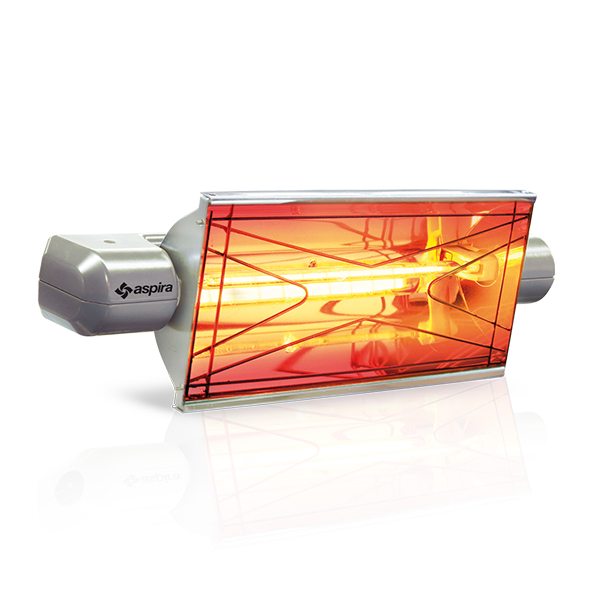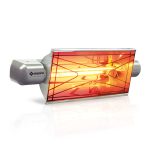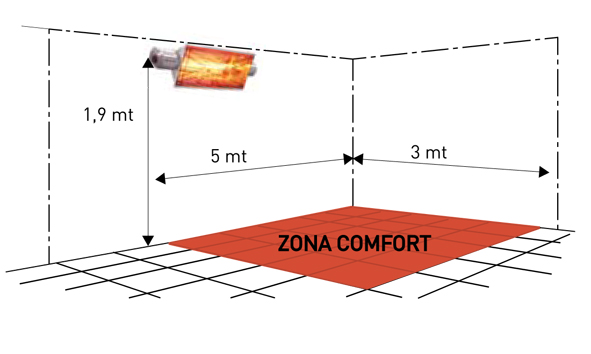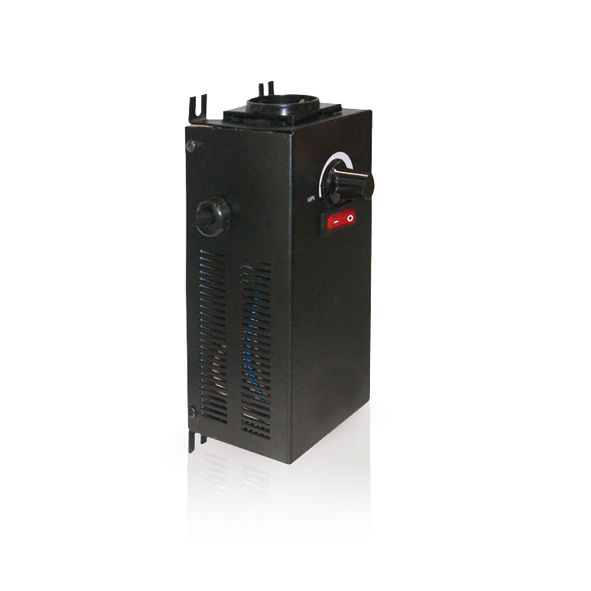Infrared electric heater
-
DESCRIPTION
General features0
Infrared electric heater with a compact and attractive design, suitable for indoor use: houses, apartments, laboratories, shops etc.
It can also be installed outdoors but in areas protected against atmospheric agents (e.g. verandas, roofing, etc.).
- Aluminium body with epoxy powder coating
- Bracket for wall mounting, provided
- Protection grille already installed
- Long life irradiation bulb (5000 hours)
- 3 m power cable with SHUKO plug already connected to the lamp
ACCESSORIES:
- Power regulator 3000 W
SPARE PARTS:
- Irradiation bulb 1300W
Electric features- Power supply 220-240V-50Hz
- W max 1300
-
ADVANTAGES
0
Infrared electric heater with a compact and attractive design, suitable for indoor use: houses, apartments, laboratories, shops etc.
It can also be installed outdoors but in areas protected against atmospheric agents (e.g. verandas, roofing, etc.).
Advantages -
TECHNICAL SPECIFICATION
Code Model V~ Hz W IP Kg AP6460 KALORDOMUS 220-240 50 1300 X5 0.95 IRRADIATION RANGE
Recommended height of installation 1.90 – 2.20 m Recommended mounting WALL mounting with 45° inclination Coverage area about 15 m² Power distribution on the surface 86 W/m² THERMAL TESTS
Product placed at 45° inclination at room temperature of 8° C
Tests carried out in more points at 1,00 m Average gradient value: 49.0°C Ttests carried out in more points at 1,50 m Average gradient value: 37.3°C Tests carried out in more points at 2,00 m Average gradient value: 27.3°C Tests carried out in more points at 2,50 m Average gradient value: 22.7°C Pay a special attention if in the comfort area people are standing or sitting. In low temperature situation, maintain the minimum distance between the lamps.
Note: the values of the irradiation range detected by the test can vary according to the installation height, the distance between the lamps, the environmental conditions and to the synergy that could arise between multiple installed lamps. -
HOMOLOGATION AND INSTALLATION
HomologationInstallation and use
- TECHNICAL LITERATURE
-
FAQS








